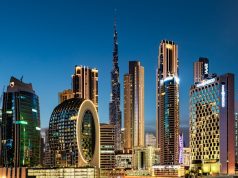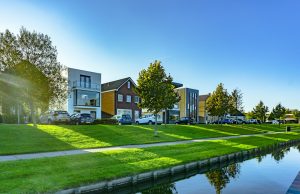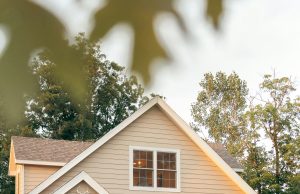External Wall Insulation (EWI) systems have emerged as a cornerstone technology in this building retrofit revolution. Unlike traditional cavity wall insulation or internal wall insulation, modern EWI solutions offer a comprehensive approach to thermal efficiency that addresses multiple challenges simultaneously.
Advanced External Wall Insulation: The key to net zero retrofits
In the race to achieve the UK’s ambitious net zero targets by 2050, the building sector presents both the greatest challenge and opportunity. With approximately 80% of buildings that will exist in 2050 already built today, retrofitting existing structures with advanced external wall insulation (EWI) systems has emerged as a critical strategy for dramatically reducing carbon emissions while improving energy efficiency.
The Scale of the Challenge
The UK’s existing building stock is among the oldest and least energy-efficient in Europe. According to the Climate Change Committee, buildings account for approximately 23% of the UK’s total greenhouse gas emissions, with space heating representing the largest portion of this figure. Most of these buildings were constructed before modern energy efficiency standards were introduced, resulting in excessive heat loss and unnecessary carbon emissions.
Recent government data reveals that nearly 19 million homes in the UK (around 66% of the housing stock) still have an Energy Performance Certificate (EPC) rating below C. This represents an enormous opportunity for improvement, with external wall insulation standing as one of the most effective interventions available.
Why External Wall Insulation Matters
External wall insulation involves applying insulation materials to the exterior walls of a building, then covering them with protective and decorative finishes. This approach offers significant advantages over internal insulation, particularly for retrofit projects:
- No reduction in internal floor space – crucial for smaller properties where every square meter counts
- Minimal disruption to occupants – installation happens entirely from the outside
- Elimination of thermal bridges – continuous external layer addresses junctions and connections that internal insulation cannot
- Protection of the building fabric – moves the dew point outside the structural elements, reducing condensation risks
- Improved thermal mass benefits – retains the ability of masonry walls to moderate temperature fluctuations
Research by the Energy Saving Trust indicates that properly installed external wall insulation can reduce heat loss through walls by up to 85%, potentially saving between £95 and £425 annually on heating bills for a typical semi-detached house, depending on the original wall construction.
Components of High-Performance EWI Systems
Modern external wall insulation systems have evolved significantly in recent years, with innovations in materials, fixings, and finishes. A comprehensive EWI system typically consists of:
- Insulation boards – including expanded polystyrene (EPS), mineral wool, phenolic foam, or newer bio-based options
- Specialized adhesives – formulated for different substrates and environmental conditions
- Mechanical fixings – ensuring long-term stability and wind resistance
- Reinforcement mesh – preventing cracking and improving impact resistance
- Base coats and primers – preparing the surface for finishing
- Decorative renders and finishes – providing weather protection and aesthetic appeal
The selection and quality of these components directly impact the system’s performance, durability, and carbon footprint. Professional suppliers like Penguin BM offer comprehensive EWI system components that work together to achieve optimal thermal performance and longevity.
Measurable Carbon and Energy Benefits
The carbon reduction potential of external wall insulation is substantial. A 2021 study by the UK Green Building Council found that a typical semi-detached house retrofitted with external wall insulation could reduce its carbon emissions by approximately 1.5 tonnes of CO₂ per year.
To put this in perspective, the UK housing stock comprises roughly 29 million homes. If just 25% of these properties installed high-quality external wall insulation systems, the annual carbon savings would exceed 10 million tonnes of CO₂ – equivalent to removing more than 2 million cars from the road.
Beyond carbon savings, building occupants experience multiple benefits:
- Reduced energy bills – typically 20-40% lower heating costs
- Improved thermal comfort – elimination of cold spots and drafts
- Reduced condensation and mould risk – improving indoor air quality and health outcomes
- Enhanced acoustic performance – additional sound insulation from external noise
- Modernized appearance – opportunity to refresh building aesthetics during installation
Overcoming Implementation Barriers
Despite the clear benefits, widespread adoption of external wall insulation faces several challenges:
Initial Cost Concerns
The upfront cost of external wall insulation typically ranges from £100-£150 per square meter, resulting in total costs of £8,000-£15,000 for an average house. While this represents a significant investment, it’s important to evaluate these costs against:
- Lifetime energy savings (typically 30+ years)
- Maintenance savings from improved building fabric protection
- Potential property value increases
- Available government incentives and grants
- The “cost of inaction” in terms of continued high energy bills
Technical Considerations
Successful implementation requires careful attention to:
- Detailed property assessment – identifying existing structural issues, damp problems, or wall irregularities before installation
- Proper detailing around openings – windows, doors, and other penetrations require careful treatment to prevent thermal bridging
- Ventilation strategy – improved airtightness necessitates proper ventilation to prevent indoor air quality issues
- Planning considerations – some properties, particularly in conservation areas, may face restrictions
Skills and Quality Assurance
The performance gap between designed and actual energy savings often stems from installation quality issues. This highlights the importance of:
- Working with certified installers with proven experience
- Using complete systems from reputable manufacturers rather than mixing components
- Implementing robust quality assurance processes during installation
- Choosing suppliers with comprehensive technical support offerings
Case Study: Large-Scale Success in Social Housing
A notable example of successful EWI implementation is the Wilmcote House project in Portsmouth. This 1960s social housing block underwent comprehensive retrofitting, with external wall insulation as a central component.
The results were remarkable:
- 80% reduction in heating demand
- Improved EPC ratings from E to B
- Significantly enhanced resident comfort and satisfaction
- Extended building lifespan by at least 30 years
What made this project particularly successful was its holistic approach – combining high-performance external wall insulation with ventilation improvements, window replacements, and resident engagement throughout the process.
The Future of External Wall Insulation
As the UK progresses toward its net zero goals, external wall insulation technology continues to evolve. Key innovations include:
- Lower-carbon insulation materials – including bio-based options derived from hemp, wood fiber, and recycled materials
- Integrated renewable energy systems – combining insulation with solar PV cladding systems
- Smart monitoring capabilities – sensors and monitoring to verify performance and identify issues
- Prefabricated panel systems – reducing on-site installation time and improving quality control
- Enhanced fire safety features – addressing concerns following regulatory changes
These advances are making external wall insulation an increasingly attractive option not just for its energy-saving potential but as part of a comprehensive sustainability strategy.
Maximizing Success Through Professional Approach
For property owners considering external wall insulation, the path to success requires a systematic approach:
- Comprehensive property assessment – understanding the specific building characteristics and requirements
- System selection – choosing appropriate insulation types and thicknesses based on property characteristics and performance goals
- Design detailing – ensuring all junctions, openings, and connections are properly addressed
- Quality installation – working with certified professionals using complete, compatible system components
- Post-installation verification – confirming system performance meets specifications
By following these steps and working with experienced suppliers and installers, building owners can maximize the carbon reduction, comfort improvement, and financial benefits of external wall insulation.
Conclusion
As the UK strives to meet its legally binding net zero targets, the role of the built environment cannot be overstated. External wall insulation represents one of the most impactful interventions available for existing buildings, offering substantial carbon reductions alongside numerous co-benefits for building owners and occupants.
While challenges remain in scaling up implementation, the combination of evolving technology, increasing energy costs, and strengthening policy support is creating favorable conditions for wider adoption. For property owners, housing associations, and local authorities serious about sustainable building retrofits, advanced external wall insulation systems should be at the forefront of consideration.
By embracing these proven solutions and implementing them with attention to quality and detail, the UK can make significant progress toward its climate goals while creating warmer, healthier, and more energy-efficient buildings for generations to come.














